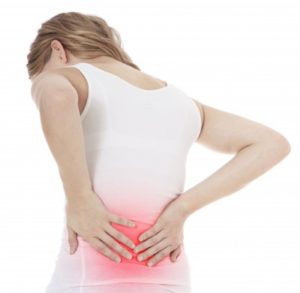Idiopathic Back Pain
Idiopathic means of unknown cause and often of spontaneous origin. Idiopathic back pain is back pain that doctors cannot explain because there is not obvious structural cause of the pain like a herniated disc, degenerative disc disease, or stenosis. Idiopathic back pain is the “diagnosis” given by doctors to patients that have chronic (over 6 months) back pain and they have been unable to figure out why.
Idiopathic is used to define other problems in the body also. Idiopathic scoliosis, which accounts for 80% of all scoliosis cases, is the name given to scoliosis that wasn’t caused by a birth defect, neurological condition such as cerebral palsy or muscular dystrophy, or an injury. But something caused the scoliosis to form, it’s just that doctors haven’t figured it out.
Ankylosing spondylitis is considered idiopathic as is focal segmental glomerulosclerosis, pulmonary fibrosis, and chronic idiopathic constipation. While the causes of these problems may not be understood, there is always something that is causing the problem to develop.
The exact cause of back pain is never found in up to 85% of cases and often the diagnosed “cause” of back pain is the most obvious structural damage that can be seen on an X-ray or MRI, but is often not the actual cause of the pain and can lead to unnecessary and possibly harmful surgeries and other interventions. MRI’s and especially which radiologist reads the MRI, have been shown to be inconsistent and full of errors (source) MRI’s also do not determine the cause of the pain (source) but only show structural damage that could be unrelated to the pain. Herniated discs have the ability to reabsorb without surgery (source and source) and non-indicated early MRIs provide no benefit and worse outcomes are likely (source). The medical model must be missing something.
 The problem with the medical model is it uses X-rays, MRIs, and other scans to look at the exact area of pain expecting the cause of the pain to be located there. This ignores the fact that the human body is a unit and the site of the pain is not always the source of the pain.
The problem with the medical model is it uses X-rays, MRIs, and other scans to look at the exact area of pain expecting the cause of the pain to be located there. This ignores the fact that the human body is a unit and the site of the pain is not always the source of the pain.
Looking at the site of the pain only, even with advanced scans like MRIs, will never tell you about a misalignment elsewhere in the body that could be causing the pain.
Posture Alignment Therapy looks at the body as unit and starts by looking at the overall body posture instead of the site of the pain.
The Solution:
At Heavenly Bodies we begin every evaluation with full body posture photos which allow us to examine the alignment of a clients’ ankles, knees, hips, spine, and shoulders. Taking the holistic and full body approach allows us to step away from focusing on the symptom and look at the entire body to determine where imbalances are present and start to put together an integrated biomechanical and kinesiological map of each clients dysfunctions, compensations and movements.
We create an exercise therapy routine that will focus on bone and joint realignment, muscle balancing, retraining, and postural stability. As the clients body regains normal and optimal posture, alignment and function their symptoms decrease and disappear.

M.D(A.M), P.A.S (Egoscue Method, California)
Certified Posture Alignment Specialist.
For Appointment: (+91) 9176997621

